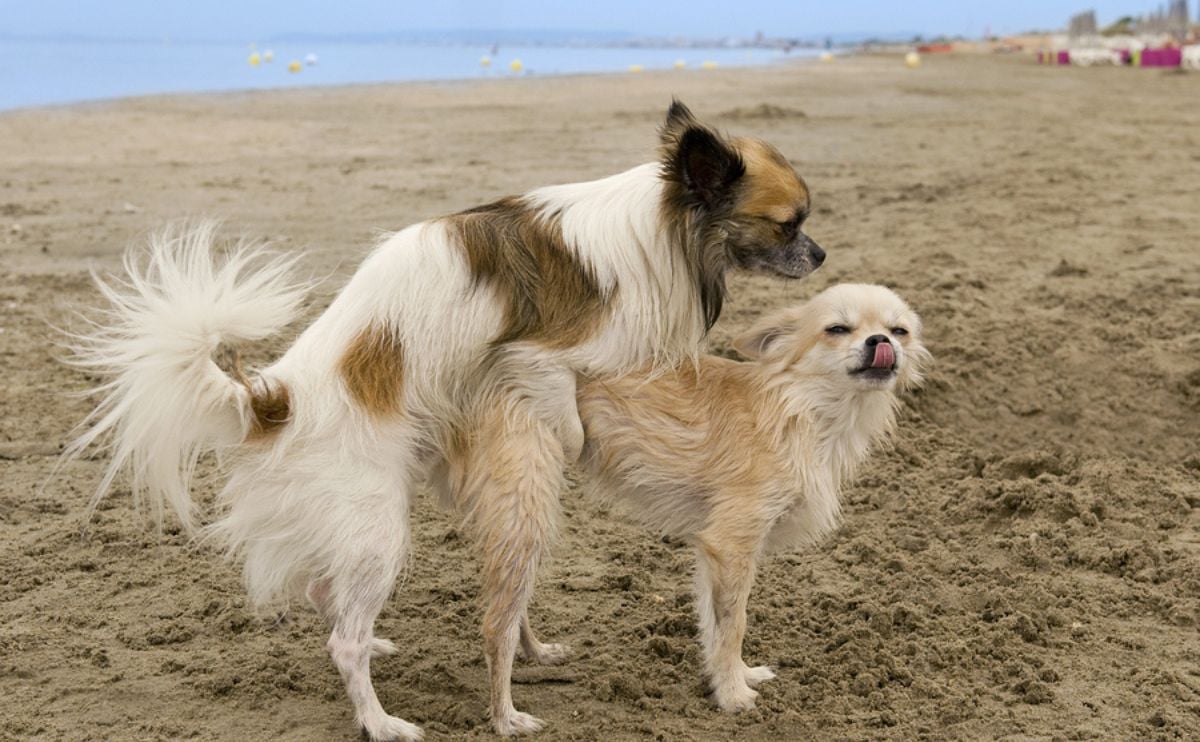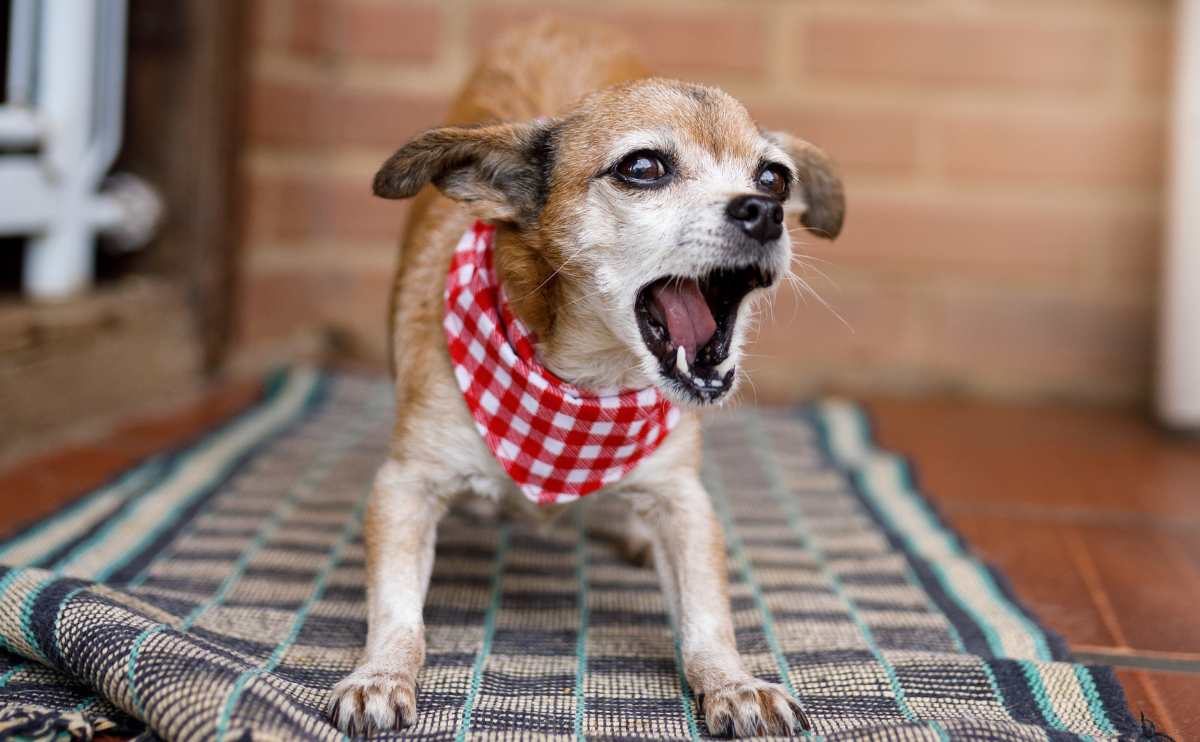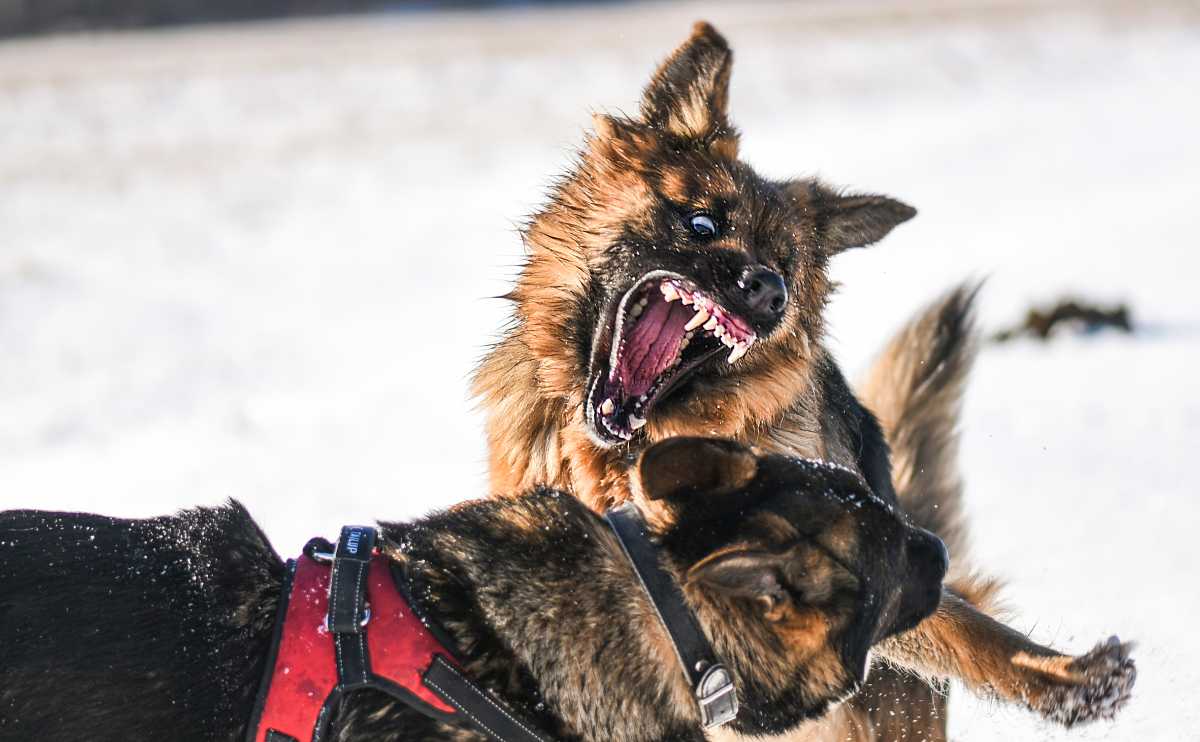This content was reviewed by veterinarian Dr. Elizabeth Racine, DVM.
When you purchase through links on our site, we may earn a commission. Here’s how it works.

Friends and dog lovers, it’s time we had the talk about a… rather sensitive topic: female dogs humping male dogs. It may be a bit uncomfortable, but let’s try to be mature about it, shall we? Let’s talk about humping and why our furry friends do the bump n’ grind on other dogs, our legs, their beds, and the occasional throw pillow.
Why Do Dogs Hump?
Here’s the deal. Some dogs never hump. Some twerk it like they’re auditioning for a Miley Cyrus video. But fixed or not, both male and female dogs hump and do the hind-legged hokey-pokey. They may do it for different reasons, but they’re equal-opportunity offenders. But why do dogs, male or female, hump other dogs?

7 Reasons Female Dogs Hump
Humping, though awkward and sometimes embarrassing, is often a normal behavior activity for a dog. It can be part of play, a sexual behavior, or be connected to a medical issue.
1. Showing Dominance
You may have heard people say humping is all about dominance, and that’s sometimes true. Dogs often mount other animals and even people to assert their social status or assume control. Both male and female dogs will mount to display dominance. But be careful not to let things get too out of control. While it’s normal behavior for dogs to establish a hierarchy in a pack, you don’t want anyone to get hurt.
Dominant humping is not about sex; it is a way your dog is showing you who’s boss. While female dogs may be less dominant than males, they may hump other animals, including male dogs or even you, to show that they are in charge. You do not want to let this behavior continue, so you must redirect your pup immediately if they start humping or mounting you or your male dogs to show dominance.
2. They’re Just Playing
Dog owners often feel confused, embarrassed, or even upset when their dog mounts another, and it’s not about mating. To address this, we remind you that people sometimes do the deed for reasons other than making babies. Canines have their reasons, as well.
According to the UC Davis School of Veterinary Medicine, humping can be part of normal play behavior without being purposefully sexual. Dogs don’t usually display erections or ejaculate in the context of playtime. Think of it as awkward wrestling. (Awkward for us, but our pups don’t really care.)
On the other hand, poorly or under-socialized dogs may mount other dogs in response to a play invitation such as a play bow. A friendly dog pushes down with his front legs extended, shoulders and chest low to the ground, and his rear end pushed up in a play bow. With tail wagging, this is the universal “let’s play!” posture for dogs of all ages and breeds and communicates this message to both canine and human friends.
However, under-socialized pups may not understand normal play behavior and can misinterpret it as an invitation for a friskier encounter. They get over-excited and anxious in social situations and relieve this tension by indiscriminate humping, also called hyperarousal. (And you thought your social anxiety was bad?)
While this isn’t inherently dangerous, an unsuspecting or unwilling humpee may growl, snap, or even bite the less-socially-savvy humper, increasing their anxiety.
3. Boredom Or Stress
Dogs that are neglected, left alone, or confined for long periods of time will do anything to soothe boredom and anxiety. Some dogs with separation anxiety resort to destructive chewing, licking, digging, howling, or barking. Left untreated, these behaviors become compulsive habits that can be tough to break.
For some stressed-out dogs, humping can become a compulsive habit, and in extreme cases, it can interfere with normal socializing, playing, eating, and sleeping.
If you suspect your dog is bored or stressed, tame compulsive behaviors by giving them plenty of exercises, a variety of toys in different shapes and textures, and walks to explore beyond their own home. If you’re typically gone for long periods of time, consider a doggie daycare or paying someone to check on them. No one likes to be left alone all day.
4. Hormones Or Being In Heat
Is your female dog spayed? No? In this case, the humping is a form of sexual behavior. Female dogs often hump furniture, people, and other dogs to cope with strong sexual urges and hormones, especially if she’s in heat. Unless you plan to responsibly breed your female dog, get her spayed, ASAP. Spayed females do not go into heat, are less susceptible to certain types of cancer, and typically live longer and healthier lives.
5. They’re Trying To Get Your Attention
Many dogs learn that humping behavior is an excellent way to get your attention quickly. And the more excited you get, the more excited they get – it may even become part of the game. In these cases, it’s best to ignore the behavior or calmly redirect your dog to a more appropriate activity. Most importantly, don’t make a big deal out of it – you’ll only teach your dog that this behavior is an easy way to get your attention.
Our Personal Experience With Dogs Humping For Attention
When guests come over, our 35-pound terrier gets super excited. She grabs a favorite toy to show the guest and sometimes even resorts to “humping” our other dog’s backend to further demonstrate excitement and enthusiasm for playing with this new friend. It can be a little embarrassing, but now that we understand she’s just looking for attention from the guest, we are often able to prevent it from happening by throwing a ball or toy to distract her right away.
– Michelle Schenker, rescue pup parent
6. It Feels Good
Sometimes female dogs will hump for no other reason than because it feels good. This can be a sexually driven behavior attached to being in heat, but your pup may simply like how rubbing up against something feels. She could be trying to scratch a persistent itch, soothe a sore spot, or just enjoy the sensation.
7. Injury Or Illness
In some cases, a female dog humping is a sign of a medical issue. This could be due to skin irritation or infection in that area, a urinary tract infection, skin allergies, parasite or flea infestation, irregular hormone production, incontinence, or a yeast infection. Pregnant dogs may hump due to hormones, and a false pregnancy can also cause it. If you suspect a medical issue may be the cause and see other signs like abrasions, cuts, sores, or other signs of injury, take your pup to the vet to get her examined.
What To Do When Every Day Is Hump Day (Video)
So you don’t want your Great Dane getting her groove back with your leather sofa or that bossy Chiweenie at the dog park. We get it. Here’s how to curb the urge and manage her mounting other pups:
- Rule out injury or infection.
- Make sure she isn’t bored or stressed. Increase exercise and playtime.
- Redirect and reinforce. When they start humping, gently but firmly redirect your pup’s attention to positive play with a toy, treat, or a learned skill such as sitting, rolling over, or pawing. Enthusiastically praise desirable behavior.
- Halt the humping before the other dog has a chance to retaliate. It may be funny at first, but an unwillingly mounted dog can turn quickly with an angry bite. This is a natural response, and you don’t want to put your dog, or any other pup or owner, in a bad or uncomfortable situation.
Learn more about stopping this behavior in this video:
When To Get Professional Help
If your dog simply will not stop and her behavior is interfering with normal dog life, consult a canine behaviorist. Check out this article about finding a Certified Applied Animal Behaviorist or a board-certified veterinary behaviorist. If you can’t find a behaviorist in your area, seek a Certified Professional Dog Trainer with professional or academic training and experience treating compulsive behaviors (not all dog trainers have this). You might also consider online dog training courses.
Proper Dog Park Etiquette
No one wants to be humped unexpectedly at the dog park, four or two-legged folks alike. To give you a place to start, we cover proper dog park etiquette for pups and their parents. If your dog bites someone or gets bitten, you or another owner may face liability or even legal consequences. For this reason, proper training and prevention of bad behavior is essential.
Why Trust Canine Journal?
Danielle is a dedicated pet owner with over 30 years of experience. She has raised many different dogs, from five-pound Chihuahuas to 85-pound Labrador Retrievers. Danielle is a dedicated writer and researcher who spends countless hours reviewing the latest studies and data in pet care, health, behavior, and products.
Tagged With: Aggression, Anxiety, Reviewed By Dr. Racine, DVM

